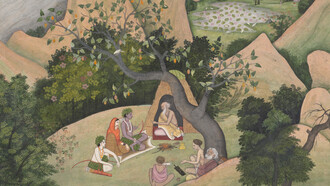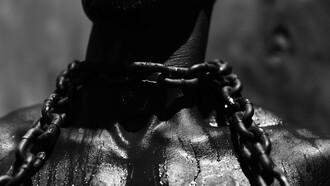Born in 1873, the Real Academia de España in Rome is still today, after 150 years, a place of the contemporary and particularly the contemporary culture displayed at 360 degrees. An important instrument of Spanish cultural policy, it is fundamental in promoting cultural ties between Spain and Italy, but Europe and Latin America have also played a fundamental role in the formation of numerous generations of Spanish and Ibero-American artists and intellectuals, as demonstrated by the 1,050 scholarship holders who, over the years, had the good fortune and the privilege of training and confronting each other in such an important place, a center of international artistic and cultural production.
Also, this year the projects of the fellows in residence are very interesting and the open studios day allows you to get to know the fellows, browse around their studios and learn about the projects from their voices. Matìas Candeira, Mariana Orantes and Andrea Valdès are writers. Matìas Candeira presents the project "Colui che aspetta", a story inspired by "The mysteries of Italy" by Dino Buzzati and set in 1965. A journey between Rome, Milan and other Italian cities but also an introspection capable of reflecting on universal themes such as death, unhappiness, waiting, wasting time, etc. "Clavícula" is the title of Mariana Orantes' project and is a collection of literary essays on some symbolic functions, a journey into the underworld, a reflection on death that moves away from the rational sphere to touch the keys that stir our primordial fears.
Andrea Valdés presents the project "Il verbo infiammato" inspired by Carla Lonzi, writer and theoretical art critic of self-awareness and sexual difference. Raquel Buj is a stylist and presents the "Unguens" project inspired by the tradition of the ancient Romans who used to create perfumes and ointments which they applied to their skin thus creating a much more personal second skin because they created it in a conscious way. Buj's idea is therefore to create garments that blend with our skin and bring us closer to the skin of others just like a perfumed ointment for the body.
Another small group of fellows is developing real research on the spot. Ana Mina, for example, in her "Archivi del presente: produrre memoria dalla soglia" a sort of archive of the present precisely as an investigation and cataloging of the post-pandemic world. "Nefando Mediterraneo: scritti di una sessualità della storia passata" by Juan Pedro Navarro intends to analyze how modern Italian and Spanish societies have assimilated ideals of beauty and corporeity in contrast to the Catholic moral and intellectual panorama. “Carte du ciel. 65°55°” by Luz Santos is a research project with an astronomical background: at the beginning of the 20th century an international project was created to map the coordinates of millions of stars. The Vatican Observatory, and in particular four nuns, was assigned the task of counting the stars between parallels 64 and 55. The project therefore intends to integrate the various documents on the work of female astronomers from past centuries.
Sara Torres Vega in her “Il Paradiso 2023: archivio di mediazione itinerante” recovers the material available on the 1957 project Il Paradiso dei Bambini, a meeting point for artists, museums and schools in the city of Milan, and proposes the construction of the archive of mediation in the metropolitan area of Rome. With reference to the musical field, among the fellows there are two proposals in this sense.
The first, Hugo Gómez-Chao, is a composer and presents the project "Libro delle Immagini" created for two sopranos and an ensemble and is inspired by Ovid's Metamorphoses and the texts of Jacques Lacan. Pilar Serrano Betored is a musicologist and the title of her project "Roma città jazz: donne strumentiste e stereotipi di genere nella scena musicale contemporanea" already summarizes her intent to analyze women instrumentalists in the contemporary jazz scene of Rome by elaborating on a catalog of performers of a musicological nature.
Changing genre and moving on to architecture, Juan Antonio Espinosa presents the project "Architetture egoiste", a book divided into two parts: a first that theorizes on the consequences of the modern canon on contemporary architecture and a second that analyzes the architecture built by writer and thinkers who acted as architects such as Gabriele d'Annunzio, Gregor von Rezzori, Harold Acton but also Praz, Malaparte, etc. David H. Falagán in his project “Abitare la periferia romana. Da sobborgo a quartiere” focuses instead on the urban transformation processes of the Roman suburbs during the second half of the 20th century using Pigneto as a case study.
Finally, moving on to the field of visual arts, the number of fellows becomes more numerous. “Non è testo – non è azione – non è suono – non è oggetto – non è scrittura – non è performance – non è musica – non è scultura” by Ana Laura Alàez is a reflection on sculpture using methods and disciplines that are not sculptural in themselves such as writing, music, performance, etc. “Ciò che vedi lo vedi sempre per vedere qualcos’altro” by Elvira Amor is inspired by the mural painting of Ancient Rome, by what we see such as the walls, the floor, the objects but above all by the mental image that we build starting from what is visible, from what we see. "Campo adentro" by Amelie Aranguren wants to record the activations that she will be able to do in the local context of Rome, including walks, exchange of seeds and notions, tasting of products, etc. "Bocca viva orecchio attento" by Fuentesal Arenillas speaks of sculpture and in particular of puppets, something that is never thought of as cultural heritage but only a way to tell the clichés of a city or a culture in a critical and often comical way.
Starting from a singular event, a toast that took place inside the horse of the monument to Vittorio Emanuele II during its manufacture in a foundry, "Cenare dentro un cavallo: più con il farro che con il ferro" by Carla Boserman imagines or resets or it re-establishes the links between some equestrian monuments and food as a means of producing social memory. “Commenti sulla violenza illustrata” by Marcelo Expósito is the resolution of a personal debt to Nanni Balestrini who 15 years ago asked him to update his novel “Illustrated Violence” in the new climate of political events in the first decades of the 2000s. “I fuochi” by Abel Jaramillo mixes fiction and historical events of Rome and Badajoz and the fire becomes the glue of such different materials and stories. “Gigantomaquia” by Manu Muniategiandikoetxea is based on figurative motifs related to social conflicts and warfare.
The friezes and sculptural complexes become an abstraction of rhythms. Itziar Okariz presents "Conversazioni con statue parlanti" which is based on conversations about inanimate objects such as a 16th-century reliquary kept in the Metropolitan Museum of New York or the Muse of Constantin Brancusi. "The painted room" by Mabi Revuelta is an interdisciplinary project based on the frescoes of Italian domus, villas and palaces. “La stanza dipinta” by Mabi Revuelta is an interdisciplinary project based on the frescoes of Italian domus, villas and palaces. Finally, "Voci vagabonde di Roma / Incontro alle quattro fontane" by Gabriel Villota Toyos is a sound portrait of the city. Four characters (Pierpaolo Pasolini, Maria Zambrano, Cristina Campo, Rafael Alberti) who have actually walked the streets of Rome walk through its streets and probably meet, cross each other.














